Having b2b inbound sales strategies is crucial in this present world. It is typically more challenging to sell products and services to other businesses or organizations than to sell to individual consumers.
As opposed to regular consumers, business-to-business (B2B) clients typically have more enormous stakes and, as a result, longer sales processes. Not to mention that your sales pitch may need to travel through many more people.
So, how do you grow your B2B inbound sales? Read on to find out the top 14 ways to increase your B2B Inbound sales and other cogent facts.
Defining B2B Inbound Sales
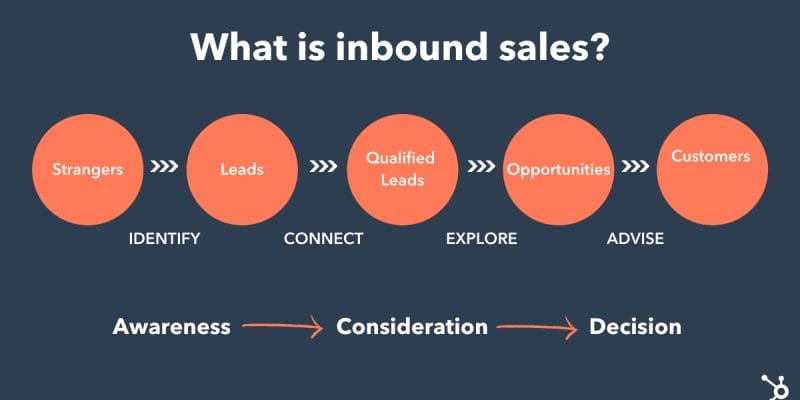
B2B inbound sales aim not to close a deal as quickly as possible, as with traditional sales methods. Instead, this strategy focuses on the customer’s goals and wants and walks them slowly through the decision-making process.
Buyer journeys are an essential part of the B2B inbound sales approach. An intelligent inbound salesperson will build unique messages for each prospect based on where they are in their purchasing process.
Therefore, these salespeople bring inbound prospects to the brand, qualify those leads based on their interests, and then provide a tailored message to each of those qualified leads. B2B inbound lead creation is much more delicate than outbound marketing.
It’s a long-term strategy that emphasizes the importance of quality over quantity. Using inbound leads saves time because you’re not wasting it on leads who may not be interested in your offer in the first place.
The Phases of the inbound sales journey
- Awareness
- Consideration
- Decision
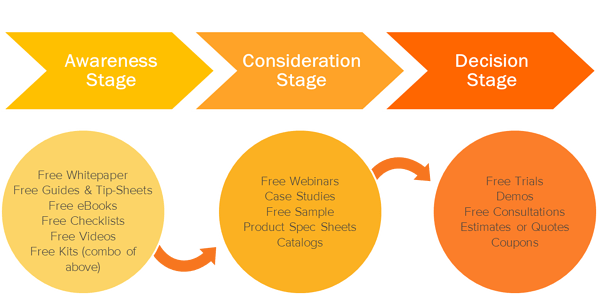
1. Awareness
In this first phase, potential customers enter it after determining that they require or desire a given product or service. If they want a new automobile, new shoes, or better software for their business, they must first accept that they have a need.
2. Consideration
We’ve all experienced the internal debate while weighing the pros and cons of making a purchase. Buying an expensive item or making a long-term commitment raises the stakes even higher.
It’s all about assessing the benefits and disadvantages, learning as much as possible about the product or service, and determining whether or not this solution is the best fit for a prospect’s needs. As a salesperson, you must treat this stage of the sales process with care.
3. Decision
Whether a prospect decides to buy or not, this is the final part of the buyer’s journey. The purchasing decision stage occurs when a potential customer decides whether or not to purchase a product or service.
B2B Inbound Sales Process
When selling B2B products and services, the typical B2B inbound sales process is divided into eight distinct steps.
– Find sales-ready leads—those who have demonstrated an interest in your product or service and are ready to buy from you.
– Look up the prospect’s business and recent activity to understand their possible needs. Using this method, you can provide a customized solution.
– At the beginning of the conversation or meeting, decide whether or not the prospect you’re contacting is a good fit for your brand or service.
– Make a presentation based on the solutions you came up with in step 2 of this process.
– Provide answers to any questions and concerns the buyer may have.
– Complete the transaction and discuss pricing and additional procedures necessary to complete the sale.
– Send a follow-up email to the client to ensure a positive experience and remind them of the following steps.
– Reach out to customers who have already used your product or service and solicit their thoughts on it.
Let’s see how you can grow your B2B Inbound Sales
1. Defining the buyer’s journey
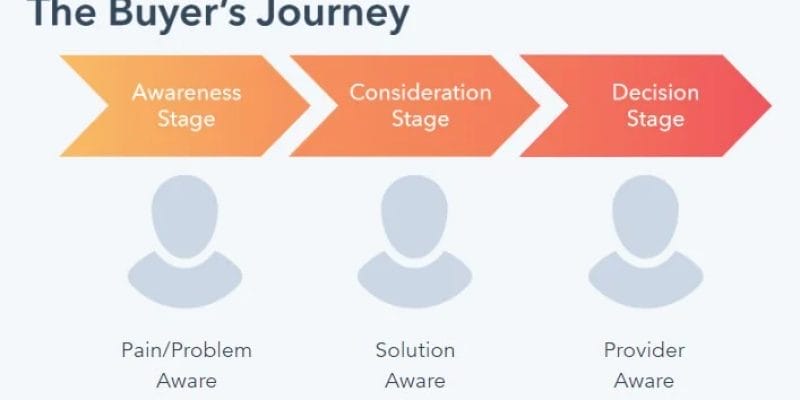
Defining your buyer journeys is the first step in establishing an effective inbound sales strategy. Customer awareness, consideration, and decision-making are divided into three stages. If you’re a salesperson, you must keep a close eye on the buyer during these stages.
Below is how it works.
– In this stage, customers know what they want to accomplish. They begin deciding whether or not they want to solve that issue or objective and whether or not your brand can help them do that.
– Buyers now have a clear set of goals and are looking for solutions. They look at several different approaches to see if any of them work. Please list the categories they’re looking into and what makes yours stand out from the rest.
– Users have arrived at a specific type of solution. A selection is made based on comparing several providers and their offers. It’s important to know which items customers are contemplating and how yours differs from your competitors.
2. Segmenting your audience

You’ve covered the fundamentals once you’ve outlined the route. Start thinking about the different types of people viewing your site now. Several methods exist for dividing your target audience. The creation of “audience personas” is a popular strategy. In other words, those are the imaginary characters you’ve constructed to represent your ideal customers.
As an illustration, suppose you’re in the business of selling a tool for automating social network postings. You may want to create a persona for a digital marketing agency decision-maker. Please inquire about the person’s age, what they enjoy doing, and what they are like in private, among other things. The answers to these questions will help you get a clearer picture of what the person is looking for and how they will respond.
You can also use analytical tools to segment your site visits. You can see which demographic groups are visiting your website by checking your Google Analytics data. You can discern your visitor’s interest with the use of heat-mapping software.
If you combine the two, you’ll better understand your site’s visitors and their activity. When you know who is coming to your website and why you are in a better position to provide them with the information they seek.
3. Frequently Create quality content.

It is essential to produce helpful content regularly to keep customers loyal to your website. It’s crucial to look at the big picture here. This isn’t about selling but positioning yourself as an authority in your field so that users looking for solutions come to you. Although SEO is a vast subject that necessitates a focused approach, there are a few fundamental considerations to undertake before you begin developing content.
– Do keyword research. Keyword research is the pillar of SEO. Find keywords for which you can write content using Google’s Keyword Planner (or a different keyword research tool). Start by producing detailed articles about the themes you’ve chosen.
– Write quality content. It’s not enough to merely write content that includes keywords if you want long-term SEO success. A website’s success is based on the quality of its content to its viewers. You might hire copywriting services for this purpose.
– Start link building. After that, it is essential to gain backlinks to your website. In a nutshell, these are links to your material that appear on other websites. Search engines will consider your page more prominent and place it higher in search results if more links are pointing to it from other sources.
When you have progressed in covering these three aspects, you can confidently state that you have launched your content strategy. It’s no surprise that search engine optimization (SEO) is far too involved a subject for us to address in this post. You should research and consider search engine optimization a valuable method for getting inbound leads.
4. Personalize your website

Personalizing your website is another way to boost inbound sales. How likely is it that a lead will buy from a website with the same generic content for all visitors, or one that calls each visitor by name, employs personalized CTAs, and even presents a customized offer to each lead?
You don’t need to give it any more thought because the solution has already been provided for you. Approximately eighty percent of businesses have seen improved results as a direct result of their investments in personalization.
Consumers also desire more personalized information, as seen by the fact that 79 percent are willing to offer marketers their data in exchange for more specific recommendations. Not just your offer but also graphics, calls to action (CTAs), and you can customize pieces of text for each visitor, and you should make an effort to do so. This is what has the potential to impress prospective customers and turn leads into paying clients.
5. Implement a multi-channel strategy
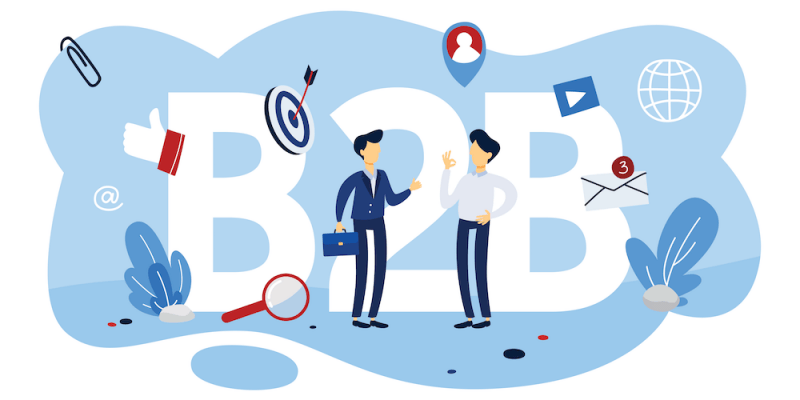
Inbound B2B sales are most effective when you can be found wherever your potential customers are searching for you. Your potential customers can get in touch via social media, email, and your website.
If you’re interested in B2B sales strategies, you might want to look closely at LinkedIn. Prospects in the B2B market are more likely than not to conduct their searches for your sales reps and then contact them directly with their inquiries. You’re missing out on an easy way to connect with your customers if you don’t have a live chat on your website. What a terrific way to be there for your consumers when they need you!
6. Invest in premium search

A long-term strategy for Google search results is SEO, whereas a short-term plan for inbound leads is Search Ads. In the same way that search engine optimization (SEO) is related to Search Ads, you choose keywords relevant to your product or service and strive to position your website at the top of the search results page.
On the other hand, SEO allows you to do this naturally rather than through paid advertising. You pay Google a monthly fee to accomplish this through Google Search Ads.
The problem with this kind of digital advertising is that the most desirable search terms are crowded with other advertisements. There is a lot of competition, which means that the price of Google Search Ads will be much more than it would be if you weren’t competing.
This method is still viable to meet users at the exact moment when they’re looking for an answer to their problems. Make sure your brand name appears in the first three search engine results, at the very least. You’ll want to make it easy for them to get to your website because they’ve already heard about you.
7. Develop a Lead-Nurturing Plan

Customers will still buy from you even if you don’t seal the deal immediately. Follow up with your leads regularly, offering value to each interaction.
8. Leverage Account-Based Marketing

Impersonal and unsuccessful sales methods result from targeting every single industry as your target market. Reverse the traditional approach of casting a wide net and then narrowing the list of potential customers to a select few.
The first step is to identify the firms you want to sell to and then tailor your approach to each one. This gives them a sense of exclusivity and makes them more open to your message.
9. Ensure Social Presence

You can contact prospects in several ways than just by phone or email. Many employees at companies are OK with merchants approaching them through social media. If you send a message to a person’s social media account, make sure it doesn’t read like a cookie-cutter message but is unique and authentic.
10. Point out Opportunities for Repeat Business
Don’t take your current customers for granted. Check-in with your existing customers to see if there’s anything else you can do for them. You can improve customer loyalty with a simple greeting or a personalized message, and you don’t need to sell anything. In addition, you may want to consider upselling or cross-sell your products and services to your current customer base.
11. Create a Follow-Up Plan
Is there anything else you need to do after the sales call or pitch meeting? Many B2B salespeople make the error of not following up with a prospect after the initial contact. When you follow up with leads after your initial contact, they will feel appreciated and be reminded of your pitch.
12. Ask for Referrals
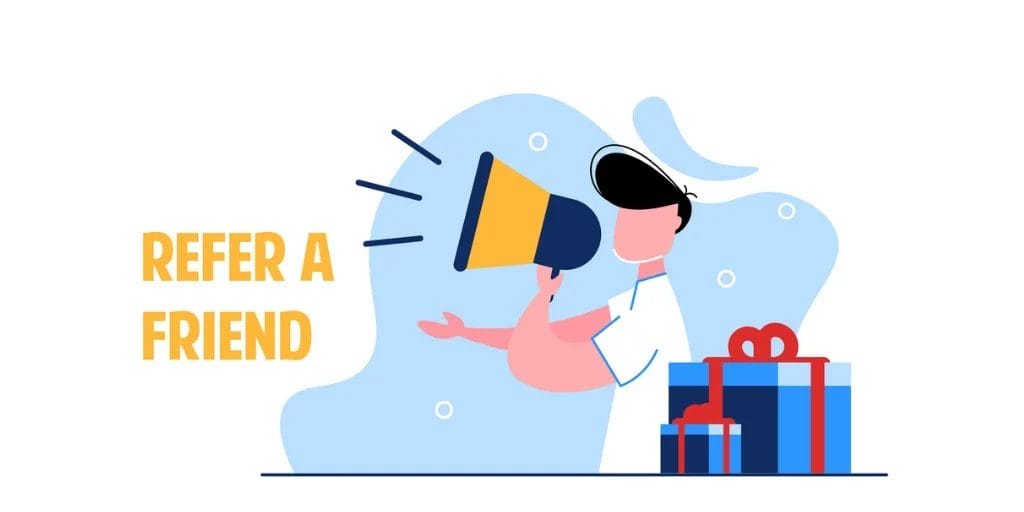
The ability to gain access to new networks through personal recommendations is a priceless asset. Ask your present customers to spread the word about your business, and you’ll have a ready-made lead to follow up.
13. Focus on Sales Experience Throughout the Buyer’s Journey
Putting oneself in the buyer’s position is an essential skill for any salesperson. Take a look at the sales process yourself and determine if it’s easy or too complicated. If you’ve had a terrible encounter, propose ways to improve the customer journey.
14. Set a Feedback Process For Lost Leads
Finding new leads is more critical than lamenting lost opportunities. When a lead drops out of the process, it’s crucial to find out why they did so and follow up with them. Make the required changes to the sales process based on their comments.
Reasons for Difficulty in B2B Inbound Sales

While B2B sales are generally more complex, this isn’t always the case. However, why is it so difficult to make sales in the B2B inbound sales sector? Here are a few possible explanations:
– Price: Many items and services you sell at a B2B company could be worth hundreds or millions of dollars. Many businesses are reluctant to make substantial financial commitments even if their employer is footing the price.
– Market size: Millions of consumers buy from B2C enterprises. As a B2B salesperson, you may only be able to reach a few hundred companies.
– Purchasing decision-making process: In B2C sales, there is usually only one decision-maker: the customer. On the other hand, selling to a business requires approval from several parties.
– Sales process speed: Because they may make an immediate purchase decision, B2C clients complete purchases significantly more quickly. In the meantime, B2B sales frequently necessitate legal documentation, adding time to the purchasing process.
– Customer service: When it comes to B2B customers, customer care and post-sale support are often crucial.
Why inbound sales work for B2B
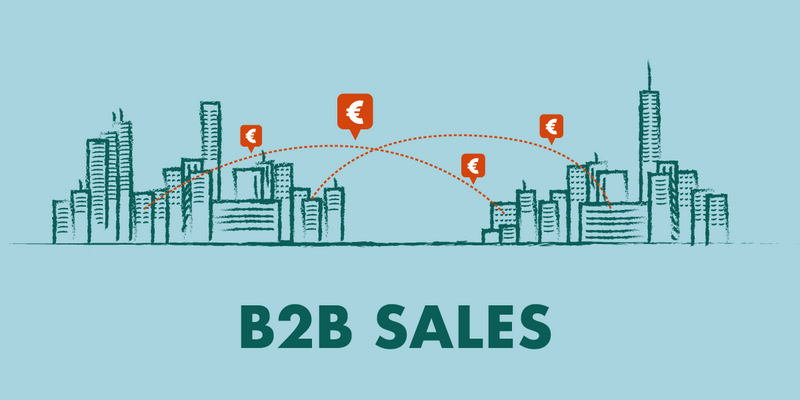
1. Buyers of Today Are Unique
The era of making cold calls is gone. The information era has made consumers more knowledgeable than ever. By arming themselves with knowledge, they are insulating against the classic complex sales techniques, which are intrusive, disruptive, and potentially offensive. In the end, the buyer now has more power than the seller.
Salespeople need to create new methods to provide value beyond what the client will probably already know when purchasing behaviors change due to consumers having access to endless information. Traditional, or “legacy,” selling took advantage of consumers who lacked understanding and used that knowledge gap to promote their products.
You must now wish to assist the purchasers in finding solutions to their issues. Because it has adjusted to this shift in consumer behavior, inbound sales succeed by giving customers the individualized experience they want and need.
2. Sales Are No Longer About You
Although it may be challenging to take in, sales were never about you. The most crucial sales component is the buyer, who is overlooked if you consider reaching objectives, completing transactions, and progressing your career. Your prospective customers are more interested in how YOU might assist them in solving an issue than in your sales objectives. Using the inbound sales technique, you must see your sales from a helpful perspective.
In the Explore step of the Inbound Sales approach, developing rapport with prospective clients will aid in establishing trust. Once you have the buyers’ confidence and are intimately aware of their needs, issues, frustrations, and objectives, you can create a pitch focused on them rather than you.
3. You are more knowledgeable about your customer
Traditional sales techniques focus on making broad assumptions about your prospective consumers without considering where they are in the buying process. We now understand that an individual in the awareness stage will not be as responsive to a sales proposal as an individual in a later stage.
You need to know your prospective customers and avoid making assumptions before considering starting the inbound sales process.
You will be acquainted with Buyer Personas if you are familiar with inbound marketing. Understanding that not every buyer type can be served by a single solution while seeking to create leads is crucial. Nevertheless, to tailor the sales process for each customer, you must be aware of who you are selling to.
You will be ready for everything that arises throughout the process if you have created and are familiar with your Buyer Persona. Using buyer personas simplifies addressing issues and objections, outlining particular advantages, and making value.
This is especially crucial for a B2B firm since customer demands vary according to their position within the organization. Because you now have a firm understanding of who your customers are and how best to address their issues, inbound sales are booming.
4. Perfectly Complements Inbound Marketing
Inbound Sales and Inbound Marketing work together seamlessly. Once upon a time, the divide between marketing and sales seemed like they were on opposing sides of the Grand Canyon. With the help of the inbound sales approach, that gap is now closing and making sense.
Technically, the beginning of the sales process coincides with the beginning of the marketing process. One naturally develops from the other since they complement one another. It makes no sense to employ inbound marketing to produce qualified leads, only to discard all the effort and valuable data by assuming the worst.
Failing to consider their unique requirements may send them away with ineffective hard-sell techniques. The proper leads should be nurtured and “advised” at the right moment by the sales and marketing teams to increase sales.
5. Brand ambassadors are produced via inbound sales
After all, is said and done, the customer will be enthusiastic about your product if you have followed the procedure and developed a genuine connection with them. They will fully appreciate its worth and desire to spread the word about your business to their contacts.
As a B2B firm, developing brand ambassadors is even more beneficial since these customers often have a broader network and more significant influence.
We must provide the customer with a positive experience to develop these ambassadors. Encourage and assist them during the whole process. You may maintain contact with customers who interact well with your company, so they will enthusiastically refer you to their contacts, clients, and business partners. This is made possible via inbound sales.
Conclusion
B2B inbound sales is a forward-thinking solution to an age-old problem: how can you differentiate yourself from your competitors and convince people to select your products? You may enhance your chances of converting those B2B leads and developing long-lasting connections based on value and trust if you use some of the strategies mentioned in this article.
Personalization is one method we like to recommend whenever there is an opportunity to make things more effective. You can create a website in a matter of minutes that not only talks to each potential lead on a more personal level but also instantly grabs their attention.
RELATED: B2B sales Pitch in 7 steps with examples to create your own
You love this Article, right? Get more Updates via Adilo’s Twitter Page.
https://www.searchenginejournal.com/paid-search-b2b-marketing/441463/
https://blog.hubspot.com/sales/inbound-sales-transforming-the-way-you-sell
https://www.superoffice.com/blog/b2b-sales/
https://www.bristolstrategy.com/what-is-an-inbound-marketing-sales-funnel
https://www.freepik.com/free-vector/businessman-troubles_768980.htm#query=difficult&position=16&from_view=search
https://blog.hubspot.com/sales/what-is-the-buyers-journey
https://learn.g2.com/how-to-create-a-referral-program








